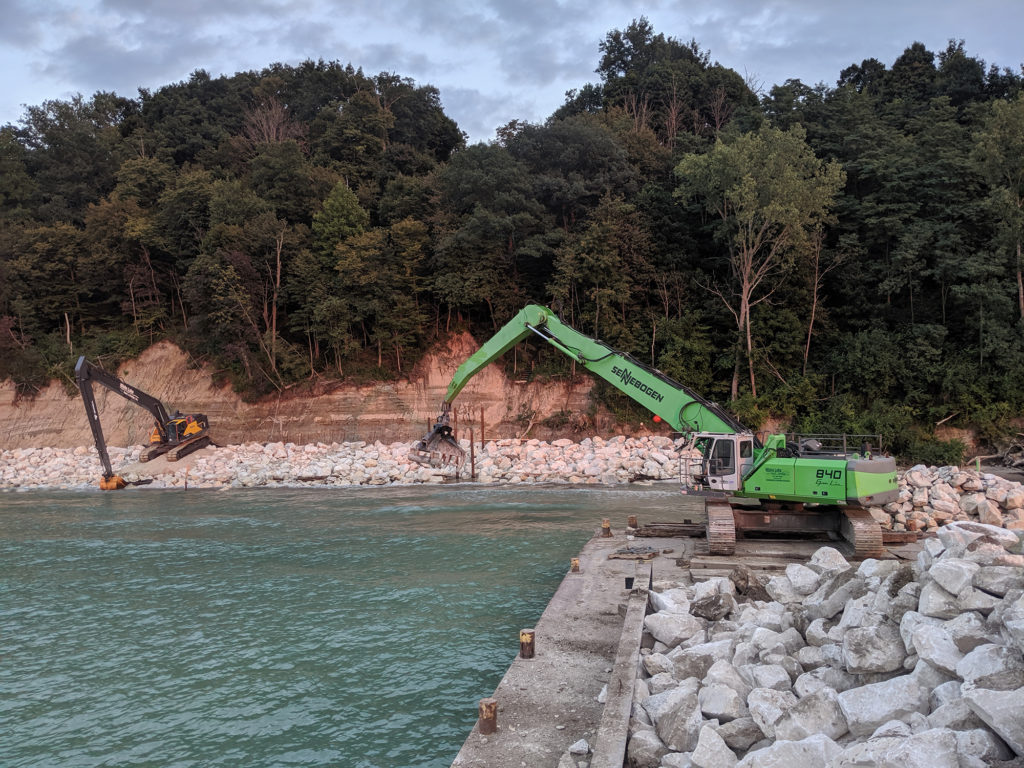
Image Source: Google
Rock revetments are structures built to absorb and deflect the energy of waves before they reach a shoreline or any structure behind it. They are commonly used to protect coastlines, harbors, and other waterfront properties from erosion caused by wave action. Rock revetment construction requires careful planning, design, and execution to ensure a long-lasting and effective solution. If you need more information about rock revetment construction, you may visit here https://www.coastseawall.com/rock-revetment-west-palm-beach-fl/
This guide will walk you through the essential aspects of rock revetment construction, from planning to maintenance.
Planning Stage
Site Assessment
- Conduct a thorough assessment of the site to determine the extent of erosion and the type of waves affecting the area.
- Consider factors such as wave energy, tide levels, soil conditions, and existing vegetation.
Permitting and Regulations
- Check local regulations and obtain any necessary permits before beginning construction.
- Consult with environmental agencies to ensure compliance with regulations related to coastal development and habitat protection.
Design and Materials
Rock Selection
- Choose rocks of appropriate size and weight to resist wave action and prevent erosion.
- Consider the availability of rocks locally to minimize transportation costs.
Filter Layer
- Include a filter layer of smaller rocks or geotextile fabric to prevent erosion of underlying soil.
- Ensure the filter layer is properly installed and compacted to provide stability to the revetment.
Toe Protection
- Provide toe protection to prevent undermining of the revetment by waves and currents.
- Use larger rocks or concrete blocks at the base of the revetment to enhance stability.
Construction Process
Site Preparation
- Clear the site of vegetation, debris, and any existing structures that may interfere with construction.
- Grade the site to the desired slope and compact the soil to provide a stable base for the revetment.
Rock Placement
- Place the rocks carefully to create a stable and uniform structure that can withstand wave action.
- Stack the rocks in a staggered pattern to provide stability and reduce the risk of displacement.
Monitoring and Quality Control
- Monitor the construction process to ensure compliance with design specifications and best practices.
- Conduct regular inspections to identify any defects or deficiencies that may compromise the effectiveness of the revetment.
Maintenance and Monitoring
Regular Inspections
- Inspect the revetment regularly for signs of damage, erosion, or structural instability.
- Address any issues promptly to prevent further damage and ensure the continued effectiveness of the revetment.
Vegetation Management
- Monitor vegetation growth on and around the revetment to prevent root penetration and erosion of the structure.
- Remove any vegetation that may compromise the integrity of the revetment.
Repairs and Upgrades
- Plan for periodic repairs and upgrades to maintain the revetment in good condition.
- Address any erosion, settlement, or displacement of rocks promptly to prevent further damage.
Conclusion
Rock revetment construction is a critical aspect of coastal protection and erosion control. By following the steps outlined in this comprehensive guide, you can ensure the successful planning, design, construction, and maintenance of rock revetments to safeguard coastal areas and structures from the damaging effects of waves. Remember, proper planning, quality materials, skilled construction, and regular maintenance are key to the long-term effectiveness of rock revetments.